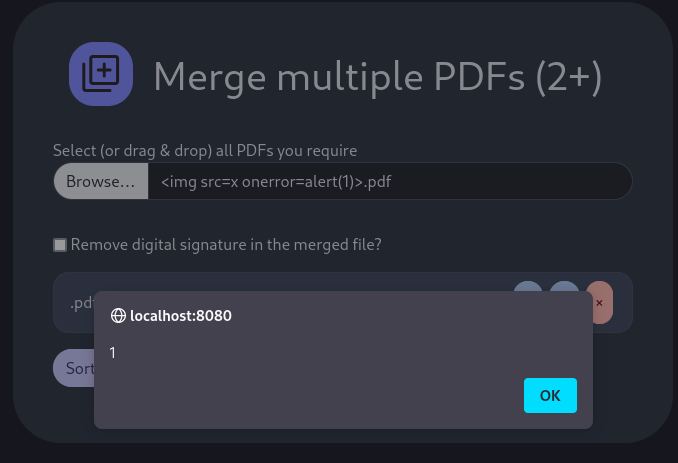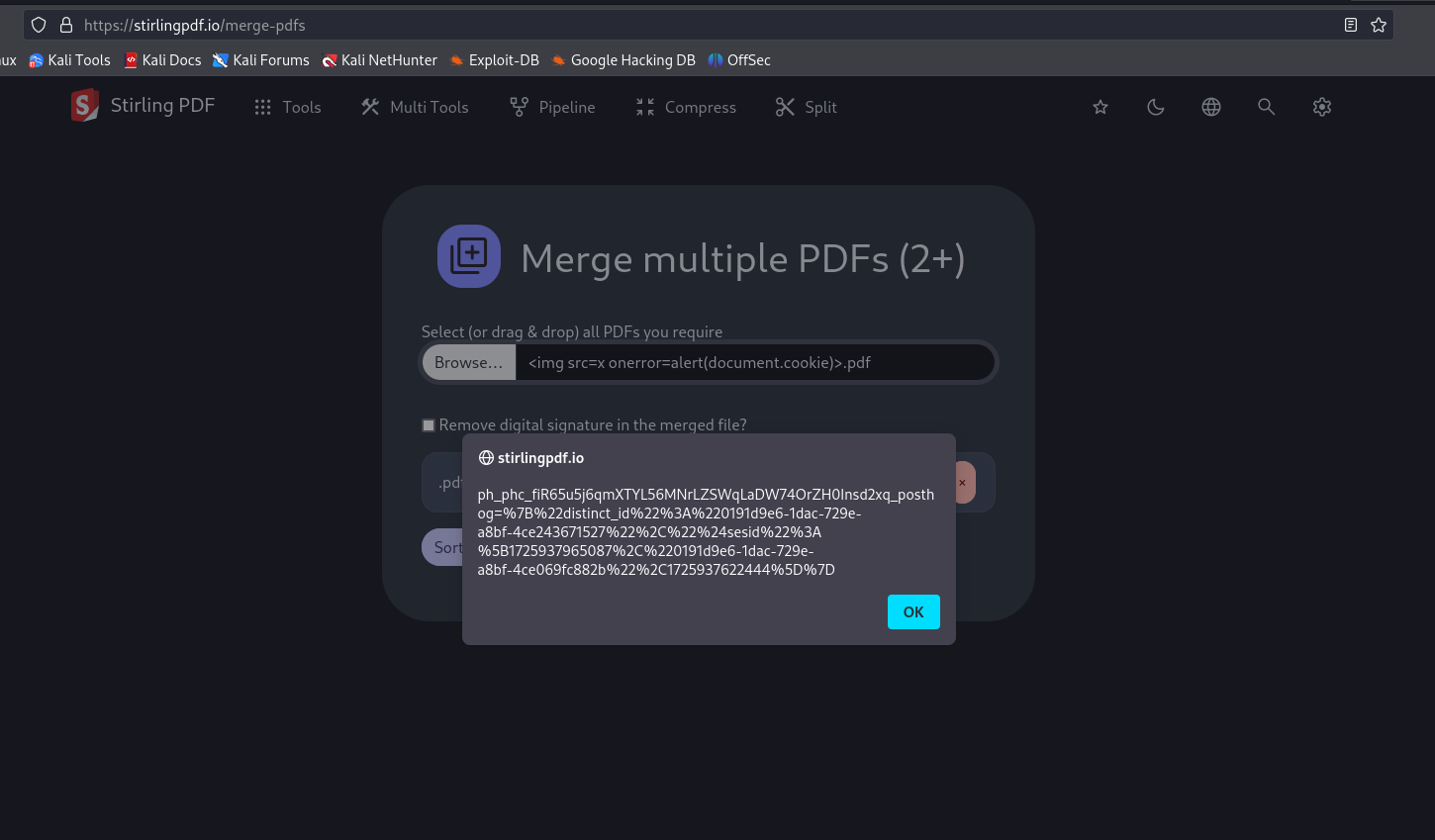CVE-2024-52286 - Self XSS in Stirling PDF
While reviewing the Stirling-PDF (https://github.com/Stirling-Tools/Stirling-PDF/) application, I identified a vulnerability in the “Merge PDF” functionality which allowed users to execute arbitrary JavaScript code, within their own context. This issue stemmed from improper handling of untrusted user input, specifically the file names, during the creation of resulting HTML page. This was later assigned assigned a CVE ID - CVE-2024-52286
Let’s break down the problem, its impact, and how to address it.
The Vulnerability
The vulnerability lies in the application’s merge functionality, which does not sanitise the file names of the PDF’s being merged. Thus when they are shown on the HTML page, they are used directly as it is, and result in HTML tags and JavaScript code to be executed.
Technical Details
The problem originated from the following code snippet in src/main/resources/static/js/merge.js, starting at Line 24:
document.getElementById("filename").innerHTML = userInputFileName;
Here, the userInputFileName variable is inserted directly into the innerHTML property, with no sanitisation or validation. This enables attackers to upload files with names containing malicious HTML or JavaScript code, which is then executed in the user’s browser.
Proof of Concept (PoC)
To reproduce this vulnerability, I used the following PoC steps:
- Created a file named
<img src=x onerror=alert(1)>.pdf. - Navigated to the Merge PDF page and uploaded the file.
- This resulted in the JavaScript code to be executed, displaying an alert box with the number “1”.

This issue was also found to be exploitable on the Stirling PDF website at stirlingpdf.io/merge-pdfs:

The Impact
This is a self-injection style attack and relies on a user uploading the malicious file themselves and it impact only them, not other users. A user might be social engineered into running this to launch a phishing attack. Nevertheless, this breaks the expected security restrictions in place by the application.
Mitigation and Remediation
To prevent such vulnerabilities, developers should follow these best practices:
-
SanitiSe User Input
Treat all user input as untrusted. Apply proper sanitisation, such as encoding special characters, to prevent malicious code execution. For instance, instead of using
innerHTML, usetextContentto safely display file names:document.getElementById("filename").textContent = userInputFileName; -
Avoid Directly Using
innerHTMLRefrain from directly assigning untrusted user input to the innerHTML property, as it can execute scripts embedded in the input.
-
Use Security Libraries
Implement libraries or frameworks designed to handle untrusted input safely, such as
DOMPurifyor similar tools for sanitization. -
Educate Users
Inform users about the risks of uploading files with suspicious names, and provide warnings where applicable.
Closing Thoughts
This vulnerability highlights the importance of secure coding practices, especially when dealing with untrusted input. By following proper input handling practices and regularly reviewing code for security flaws, developers can ensure that their applications remain safe for all users.
Ths issue was identified and reported to the maintainer on the 10th of September 2024. I raised a pull request with a fix for this (https://github.com/Stirling-Tools/Stirling-PDF/pull/2189) which was accepted and merged in November 2024. I was also assigned CVE-2024-52286 for this vulnerability.
References
- [https://github.com/Stirling-Tools/Stirling-PDF/security/advisories/GHSA-9j55-gvf2-cqwv]
- [https://hotanya.fyi/blog/self-xss-in-stirling-pdf-cve-2024-52286/]
- [https://www.cve.org/CVERecord?id=CVE-2024-52285]
